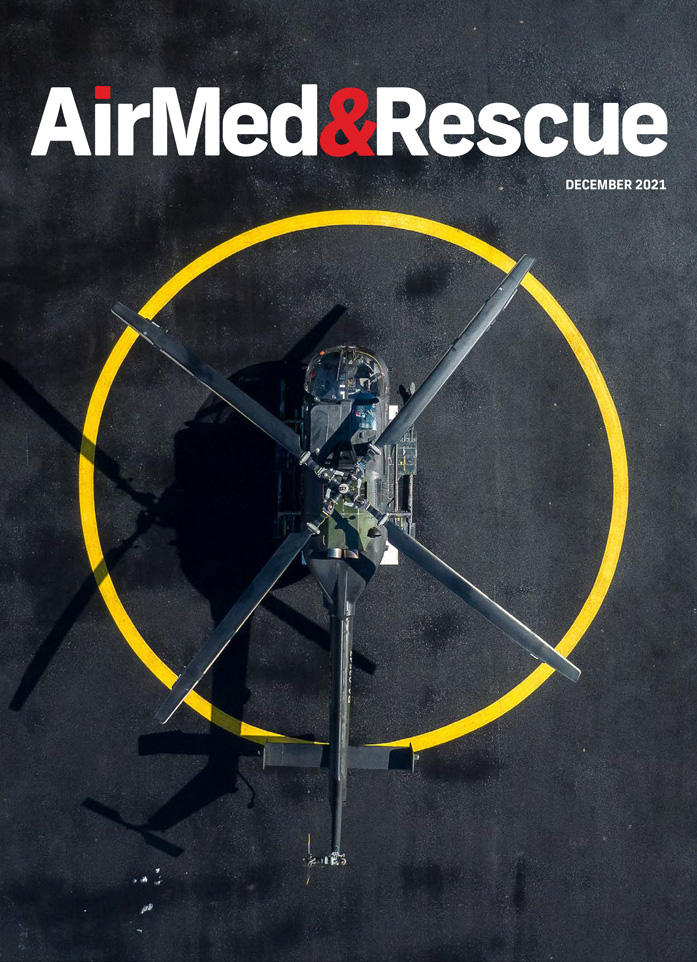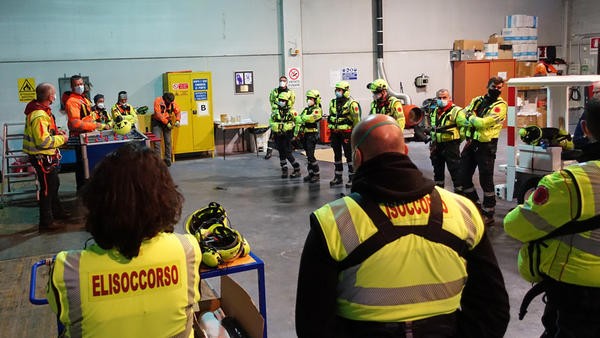GALLERY: Night Operations Training

Dino Marcellino presents a selection of photos from Airgreen and 118Piemonte’s night best practice operations training from May 2021, including winching, NVG use, and communication
Italy is divided into 20 regions, each with the responsibility – but not the obligation – of organizing and maintaining its own air medical service. The rescue service in Piedmont, a large region in Italy’s northwest, sat at the foot of the Alps and bordering France and Switzerland, is run by 118Piedmonte. Of the four bases 118Piedmonte operates from, three are managed by Italian helicopter transport services company, Airgreen.
All 118Piedmonte crew members are qualified for daytime operations, and in May 2021, Airgreen and 118Piedmonte began training activities to qualify its HEMS personnel for night missions. This training centred on several categories, including winching, auto-hovering and NVG use, and communications.
Winching at night
Night winches tend to be shorter – typically 10-20 meters – to give the pilot more visual references. As such, winchmen and others hanging on the hook are influenced by the rotor flow, leading to an increase in rotation. This is further exacerbated by backpacks, baskets, and stretchers. Typically, in daytime operations, the helicopter hoist operator (HHO) will have begun their descent on approach. However, to reduce risk variables in night operations, the HHO will begin their descent at the vertical point of contact.
Auto-hovering and NVG use
Auto-hovering allows for height corrections independently, but can be aggravating for members and casualties on the hook – particularly when the helicopter autopilot immediately adjusts after crew and equipment touches the ground. This can lead to as much as 20cm of height fluctuations, a significant amount when strict control is required. The use of night vision goggles (NVGs) is typically done at the discretion of the winch technician, but they must also consider how readily they can carry out standard cross-controls, check the harnesses, and maintain optimum safety for all staff in the cabin.
Communication during night operations
Non-verbal gestures used in daytime missions are ineffectual during night operations, placing additional focus on standard calls – short sentences between mountain rescue and pilot, with the rescue technician relaying information to the whole team. During night operations, 118Piedmonte recommends medical crew use the radio strictly for observation.

December 2021
Issue
- Avionics upgrades making flight safer
- The equipment protecting crews from infectious diseases
- The move from single to twin-engine helicopters
- What to do if a pilot is incapacitated
- Interview: Kim Germishuys, Dutch Caribbean Coast Guard
- Profile: AMREF Flying Doctors
Dino Marcellino
Known around the world for his aviation photography and reports, Dino Marcellino has been fascinated by aircraft since his childhood, and has spent his life combining his passion for aircraft with that of photography. Flying on more than 25 different types of helicopters, he has worked with the Italian Navy, Army and Air Force, as well as police and rescue organisations.












